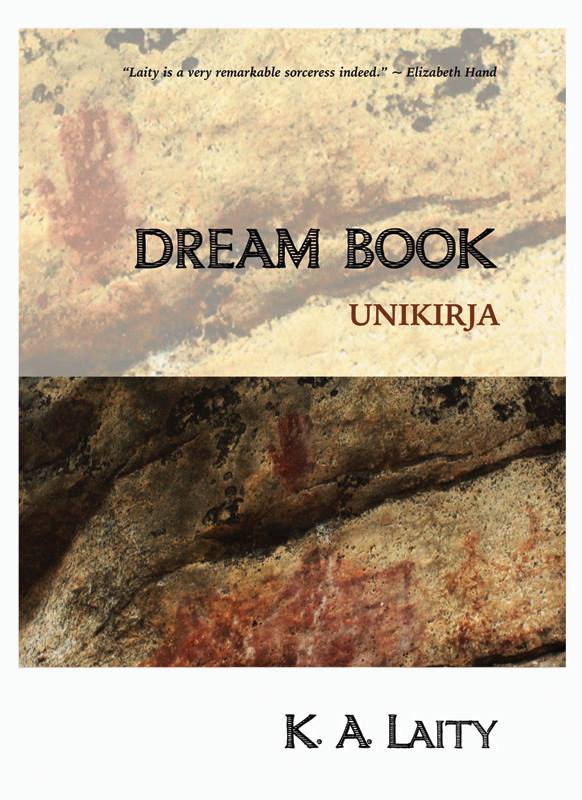
by K. A. Laity
Today Fox Spirit Books brings out a shiny new edition of my tales inspired by Finnish myth and folklore, DREAM BOOK. Inside you’ll find short stories (including two brand new ones), a little poetry and even a play.
Let me tell you a bit about the mythology. The Kalevala and The Kanteletar are the twin tomes of Finnish myth and folklore. The stories and songs that make up these collections are very old, but were gathered together in the nineteenth century as a surging sense of national pride grew. The tiny nation straddles the dividing line between the Baltic and Scandinavia, and had been dominated alternately by its two larger neighbours, Sweden and Russia.
Väinämöinen is the eternal sage. After Ilmatar the goddess gives birth to the world, he is the first human born. He knows all manner of magic. I’ve always found it fascinating that much of Finnish magic comes from know the true names of things and being able to sing them. At one point, Väinämöinen faces a young challenger who thinks he can take on the old man, but he gets sung right into a swamp. The panicky Joukahainen offers his sister’s hand in marriage, which starts another theme for the old magician: he never gets the girl.
Aino is the sister offered to Väinämöinen. Her parents think it’s an advantageous marriage, but the beautiful young maiden finds little appeal in being joined to the ancient sage and finally drowns herself to escape. She comes back, however, as a salmon to taunt Väinämöinen, so she lives again. Väinämöinen’s mother suggests he should go north to find a bride instead.
Louhi is the witch of the northern lands. There’s a great split in the Kalevala between the people of the south in Kaleva and those in the north, so they’re always portrayed as adversaries. Louhi, while seemingly as powerful as Väinämöinen, inevitably the stories depict her as “evil” which just sat wrong with me. I used to play in a band called Louhi’s Daughters with my friends Minna and Kasha, who shared the opinion that we were getting a rather one-sided view of Louhi. In our performances we tried to give a more balanced picture of this amazing woman. Our very first performance together was a retelling of the Aino story, which also proved a resonant touchstone for DREAM BOOK.
While The Kalevala has a series of narrative threads, The Kanteletar is a looser collection of songs grouped by who sings them, i.e. men, women or children. There are also a number of ballads that would be sung by everyone. Not surprisingly, one of the songs is all about the kantele, the national musical instrument of Finland. The name of the collection is kantele plus the feminine ending, so you might think of “Kanteletar” meaning the spirit of the kantele, the source of all the songs.

